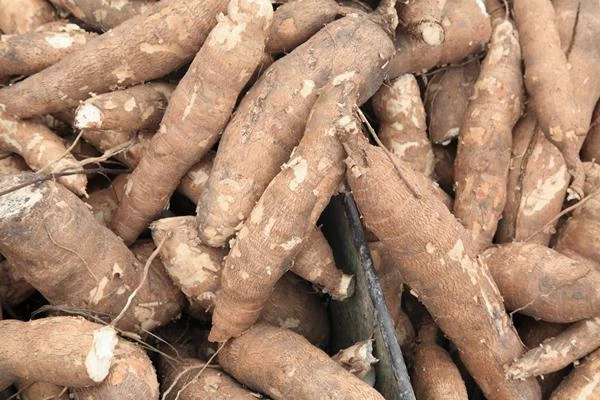
The Largest Import Markets for Cassava
Oct 26, 2023
 382
382
Cassava, also known as manioc or yuca, is a versatile and starchy root vegetable that is widely consumed around the world. It is a staple food for millions of people, particularly in developing countries. While cassava is grown in many regions, certain countries have emerged as the top import markets for this crop. In this article, we will explore the world's best import markets for cassava and provide key statistics and figures to support our analysis. China: Leading the Cassava Import Market. China, with an import value of $2.0 billion in 2022, stands tall as the leading import market for cassava. The country's massive population and rising demand for alternative food sources have contributed to its strong position in the market. Cassava is used in various forms in Chinese cuisine, from steamed and boiled to mashed and fermented. The versatility and nutritional benefits of cassava have made it an attractive food option in the country. Thailand: A Key Player in the Cassava Market. Thailand takes the second spot on the list of top import markets for cassava, with an import value of $585.3 million in 2022. The country's rich agricultural resources and expertise in cassava production have propelled it to become a key player in the global cassava market. Thailand exports cassava in various forms, including fresh roots, dried chips, and processed products. Vietnam: A Growing Market for Cassava. Vietnam has shown significant growth in its cassava import market, with an import value of $162.6 million in 2022. The country's favorable climate and soil conditions make it an ideal location for cassava cultivation. Additionally, the increasing demand for cassava-based products, such as tapioca starch and flour, has contributed to Vietnam's rising import figures. South Korea: Importing Cassava for Various Uses. South Korea imports cassava worth $106.5 million in 2022, making it a notable player in the global cassava market. The country utilizes cassava for various purposes, including food, animal feed, and industrial applications. South Korean consumers enjoy cassava-based snacks, noodles, and beverages, reflecting the versatility of this root vegetable. United States: Embracing Cassava in its Culinary Scene. The United States is also a significant importer of cassava, with an import value of $90.2 million in 2022. Cassava has gained popularity within the country's diverse culinary scene, especially in Latin American and African cuisines. The United States is also a major supplier of processed cassava products, such as frozen fries and chips, to the global market. Netherlands, Spain, and Other European Markets. Several European countries have notable import markets for cassava. The Netherlands imports cassava worth $44.6 million in 2022, primarily for industrial applications and processing into starch and flour. Spain's import value stands at $11.4 million, driven by its diverse food industry. Other European countries, such as France and Canada, also import smaller amounts of cassava, with values of $10.4 million and $7.0 million, respectively. The Role of Market Intelligence Platforms. These statistics and figures have been derived from the IndexBox market intelligence platform, which provides valuable insights and data on various industries and markets worldwide. It enables businesses, researchers, and analysts to access accurate and up-to-date information to make informed decisions. Conclusion. The world's best import markets for cassava include China, Thailand, Vietnam, South Korea, and the United States. These countries have displayed significant demand for cassava, driven by factors such as population size, culinary preferences, and industrial applications. The import values for cassava in these markets showcase the growing prominence of this versatile root vegetable. With the help of market intelligence platforms like IndexBox, businesses can stay informed about the latest market trends and make strategic decisions to capitalize on the opportunities presented by the global cassava market.